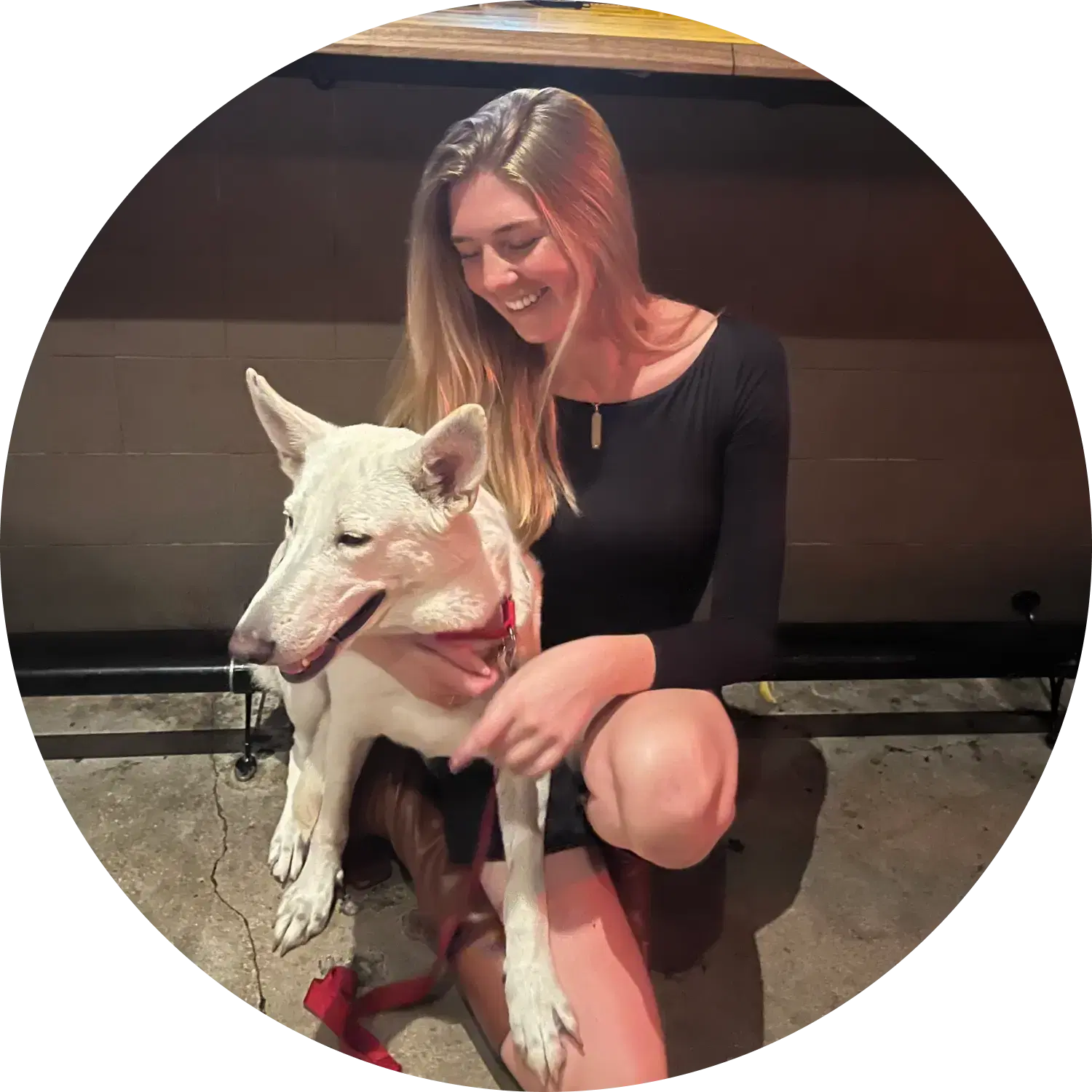Diarrhea, the production of loose and frequent stools, is one of the most common G.I. issues in dogs. According to a Web MD article reviewed by DVM Amy Flowers, feeding pumpkin to dogs can help soothe their stomach and remove excess water in a dog's digestive tract. Let's walk you through some of the benefits and how to serve and prepare pumpkin to your pet.
In some cases, bringing a dog with diarrhea to the vet for an examination is a good idea. In less serious situations, you may be able to treat your pet from the comfort of your own home. Of course, if you are ever seriously concerned that your pet is ill, bring them to the vet immediately.
Learn more about pumpkin, a potential wonder food for dogs with diarrhea. If you want to learn more before trying it on your own dog, we’ve got additional information about how pumpkin might help your pup.
In this article, we will explore whether it’s safe for dogs to eat pumpkin and find some helpful tips, including how much pumpkin to give a dog with diarrhea. In addition, you’ll learn which form of this well-loved squash to feed your dog and the potential health benefits pumpkin can provide your pooch.
Continue reading to learn more about how pumpkins could contribute to your dog’s health when they’re experiencing diarrhea.
Is it safe for dogs to eat pumpkins?
As a pet parent, it is your responsibility to do your research before feeding your pet anything. Is pumpkin safe for dogs? This is a valid concern, as plenty of foods that are harmless to people could prove toxic for your pups.
Luckily, your dog can safely eat pumpkin. It might even help soothe their tummy if they are struggling with diarrhea. There are also potential health benefits associated with feeding your pup pumpkin (in moderation, of course).
When your pup is experiencing diarrhea, you probably want to get them fixed up as quickly as possible. You need to get to the root of the problem first and figure out why your dog is sick. Without understanding the underlying problem, your pup could continue to experience problems.
Double-check your pup for additional symptoms before you use pumpkin to help with your dog’s tummy troubles. For many pets, this will mean a trip to a trusted veterinarian.
When you go to the vet, make sure you have notes about your pup’s behavior. Note if they are not acting like themselves, how long they have been having diarrhea (and if it’s been more than a day, seeing a vet is a must), and if the diarrhea is accompanied by any other symptoms, behavioral, or physical. Bring these notes with you when you go to the vet; they will help you get to the bottom of what’s going on.
What causes dogs to experience diarrhea?
Your dog should go to the vet if they are continually experiencing diarrhea. The cause could be as simple as a treat that didn’t sit right with your pet. Something more serious could also be going on — something that requires treatment. Therefore, it is always best to be a diligent, caring pet parent and take your furry family member to the vet if you’re concerned.
At Spot Pet Insurance, we know how scary it can be when your pet doesn’t feel well. That’s why we’re here to help ensure that your pet gets the care they deserve. You never have to feel like you are taking care of your pet alone.
Continue reading to learn more about some of the most common reasons that dogs might be experiencing diarrhea. Some are less serious, and you might be able to alleviate symptoms with pumpkin. Other cases might require medical intervention from a trained professional.
Your dog could have an upset stomach
Not all cases of dog diarrhea are severe. Sometimes, dogs get belly aches — just like humans. A canine tummy ache can result from several causes. Perhaps your pup ate something that did not sit well with them. Maybe you changed your dog’s diet too quickly, which can also result in an upset stomach and diarrhea.
Your dog might also experience diarrhea if they are anxious about something. Like humans, dogs’ stomachs mirror how they feel. Therefore, your dog might be indicating that they are stressed out. In this case, determining why your dog is stressed could help eliminate their diarrhea.
Your dog could have parasites
Your dog might be having diarrhea if they have internal parasites. Although this sounds scary, don’t panic — many parasites are highly treatable, as long as you catch them in time. As such, if you notice that your dog is experiencing repeated diarrhea, bring them to the vet in a timely manner.
Your dog could have parvo
Diarrhea could also indicate that your dog has parvo. This disease impacts your dog’s gastrointestinal tract and is extremely serious. The risk of your dog getting parvo is higher if they are a puppy or if they’re unvaccinated. It’s easy to prevent your dog from getting parvo, however. Simply ensure that they are up-to-date with their vaccinations.
It pays to ensure that your pet is not suffering from this severe illness. This is especially relevant if you have other dogs or pets that your dog is exposed to, as they could fall ill, too.
The only way to figure out what is going on with your dog is to bring them to the vet. Doing so will give you a better understanding of how to help your pet in the moment and what you can do in the future to reduce the likelihood of another bout of diarrhea.
How much pumpkin should you feed your dog?
After you’ve worked with a trusted vet to rule out serious illness, you can take steps to help reduce their diarrhea. This means you might have the opportunity to feed your dog some pumpkin, so let’s talk specifics.
Plenty of pet parents have questions about how much pumpkin to feed their dogs and what type of pumpkin they should choose.
Ensure that your dog is not allergic to pumpkin by keeping an eye out for any adverse reactions. Start with a teaspoon of pumpkin per day per 10 pounds of your pup’s body weight. The amount will vary depending on your dog’s size. After you see how your dog tolerates this first taste of pumpkin, you can continue to feed them pumpkin to assist with their diarrhea.
Once you know your dog can handle pumpkin, start to give them more to help with their belly ache. Add one to four tablespoons of either pumpkin powder or canned, unsugared pumpkin puree into your pet’s meal. Start small and use your discretion. When in doubt, reach out to your vet to ask them how much pumpkin you should give your dog.
If you have a small toy breed, four tablespoons may make them sick. One will suffice. In contrast, if you have a golden retriever, you may need four tablespoons to successfully help with your dog’s diarrhea.
What kind of pumpkin can you feed your dog?
You can only feed your dog certain forms of pumpkin.
Is canned pumpkin good for dogs?
Your first and best option is canned pumpkin. If you want to give your dog canned pumpkin, always make sure it is unsweetened and, most importantly, it never includes any xylitol. Pure pumpkin puree can be a great treat for your pet and a healthy addition to their meals.
Using pumpkin for dog treats is another great option! If your dogs enjoy the pumpkin puree try looking up a few pumpkin dog treat recipes for your pet; pumpkin peanut butter dog treats tend to get great reactions from dogs!
Your pup can never have canned pumpkin pie filling, no matter how delicious it tastes to you! It could contain a substance called xylitol, which is highly toxic for dogs. It’s the same substance that makes gum so toxic for dogs.
Check your canned pumpkin for added sugar, salt, spices or additional additives that could ultimately make your dog’s belly hurt even more.
Can dogs have fresh pumpkin?
If it’s in season, you can also give your dog fresh pumpkin. Just make sure to cut the pumpkin into small pieces so that your dog can easily enjoy this treat. The last thing you’d want to do is give your dog a choking hazard.
That said, unsweetened canned pumpkin is the best option. Fresh pumpkin has a higher water content. Canned pumpkin has a higher concentration of nutrients and fiber.
Can dogs have pumpkin powder?
You can also give your dog pumpkin powder. Just ensure that it was specifically designed for pets.
Pumpkin precautions
Because you never know when your furry friend will have a bellyache, keep some canned pumpkin around the house. If your dog unexpectedly has diarrhea, you can help them as quickly as possible.
Check the expiration date before feeding the pumpkin to your pet. You don’t want to get your dog even sicker by giving them expired food.
Is pumpkin good for dogs to eat?
Giving your dog pumpkin has many merits. Let’s discuss some of the health benefits associated with feeding your dog pumpkin.
Pumpkin is rich in fiber — which is great for dogs
Fiber is helpful for your dog for several reasons.
Fiber helps with your pup’s healthy digestive tract maintenance.
Fiber is usually fermented into fatty acids by good bacteria in your dog’s intestines. Those fatty acids help prevent bad bacteria from overgrowing. The result is improved digestion for your dog.
Additional fiber could also prove helpful for dogs who are a little overweight. This is because fiber is filling; your dog will require less food to feel full.
If your pup has diabetes, don’t skimp on the fiber. Fiber slows digestion, which can prevent your dog’s blood sugar levels from spiking suddenly. The result is fewer fluctuations in your dog’s blood sugar, which may help them better manage their diabetes.
Pumpkin contains vitamins A, E, and C
Fiber is not the only helpful substance that pumpkin has an abundance of. Pumpkin also offers your dog vitamins A, E, C, potassium, and iron. Let’s dive into why these vitamins are so helpful to include in your pup’s diet.
Vitamin A is a must-have for your pup. If you want your pet to properly maintain their coat, muscles, nerves, and skin, ensure they have enough vitamin A in their diet to do so. This is especially relevant for pregnant dogs. If your dog’s coat looks different than usual, you might find that they are vitamin A deficient. Don’t worry — you can remedy this fairly easily.
Your dog needs vitamin E, which helps support the proper function of your dog’s immune system, heart, liver, muscles, and nerve cells. Cell function and fat metabolism are also impacted by vitamin E. There are several ways that your pup can get vitamin E, but one of them is with pumpkin.
Your dogs can also acquire vitamin C from pumpkin, which can help them live their healthiest, happiest lives. Vitamin C is responsible for your pet’s ability to ward off free radicals, thanks to the presence of free radicals. In addition, vitamin C can support your pet as they age healthily and help soothe inflammation levels in their body.
Pumpkin is rich in potassium and iron
Pumpkin also contains potassium and iron. Perhaps you know of these minerals and what they do for humans but aren’t sure why they are so vital for your pet.
Potassium is an important electrolyte required for the healthy and regular function of a dog’s muscles and nerves.
Iron is also another bodily necessity for healthy dogs. If your dog has low iron, they will start to show symptoms that are consistent with anemia. As a result, your pup could have difficulty with their physiological processing.
Could pumpkin help constipated dogs?
In addition to helping dogs experiencing diarrhea, pumpkin can also help dogs experiencing constipation. This is yet another reason why pet owners should always have a can of unsweetened pumpkin on reserve.
Ensure that your dog is not intolerant to pumpkin. After you’ve done that, add one to four tablespoons of pumpkin per meal into your dog’s diet. This could potentially help them pass stool faster.
When your dog’s fiber amount is increased, you will also want to ensure that they have access to a substantial amount of water. Hydration is key; being dehydrated could make the situation worse for a constipated pet.
When your dog has diarrhea, you may also need to deal with the underlying issue, rather than using pumpkin as a bandaid for constipation. If you know what’s causing your dog’s constipation, you may be able to make lifestyle changes to reduce the risk of constipation in the future.
Can you give your dog pumpkin when they’re not sick?
You can give your dog pumpkin all the time, even when they aren’t sick. In this case, you might not need as much pumpkin as when your pet is experiencing diarrhea or constipation.
You also may want to make pumpkin a special treat, not an everyday thing. Fiber and the other minerals that pumpkin offers are beneficial; however, giving your dog too much could have adverse effects. Play it safe and only give your dog pumpkin every few days. It’s a wonderful snack for your dog, in moderation.
Think of pumpkin as a treat for your do, almost like peanut butter. Put it in a kong or use it as a tasty topping on top of your dog’s regular dog kibble. If you notice your dog is having an adverse reaction, stop adding pumpkin to their food and speak to their vet.
Spot Pet is here to help ensure your dog gets the best care possible
At Spot Pet, we’re passionate about helping ensure that your dog has the most holistic coverage possible for covered conditions. This helps ensure that you can put your dog front and center — because their health is central to everything we do. Whether you’re figuring out dental care for illnesses, you need to bring your dog to the vet for a sick visit, or your dog is facing a severe diarrhea issue, we’re here to make sure you and your pup feel supported.

The resident animal enthusiast at Spot. I have a lifetime of pet parent experience. If it has fur, feathers, or scales, I’ve probably shared my home with it. I aim to be a reliable source, blending experience with a dedication to the well-being of pets.
Hypokalemia Low Potassium Levels In Dogs | VCA Animal Hospitals
7 Vitamins Your Dog Needs for a Healthy Life | American Kennel Club
Vitamin Deficiency in Dogs | NASC
Benefits of High-Fiber Dog Foods | American Kennel Club
Canine parvovirus | American Veterinary Medical Association
Can Pumpkin Help With Dog Diarrhea? | American Kennel Club












